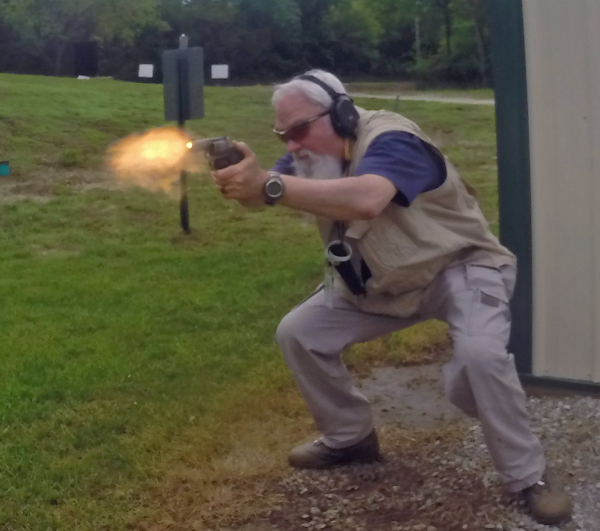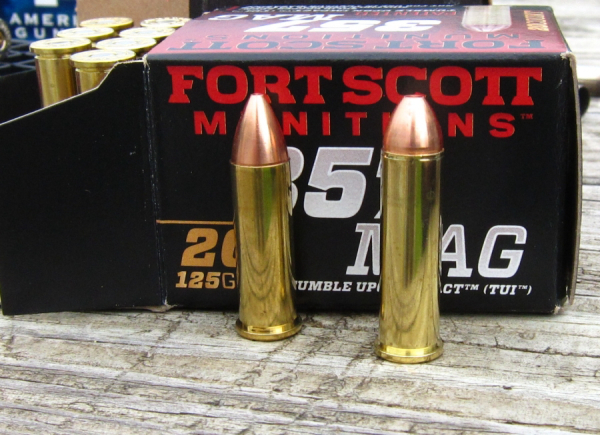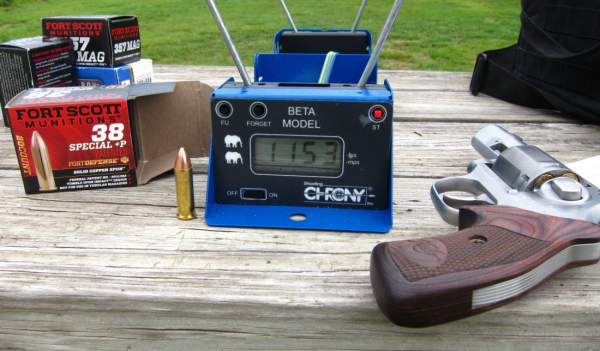
For the past several weeks, I’ve had a Kimber K6S 3in DASA revolver in for evaluation. It’s been evaluated as a carry piece with a state police qualification course fired by a pair of us, a “snub” quantitative evaluation and general handling tests.
The question arose about ammo selection for such a cannon: it’s chambered for 357 Magnum and I’d made the statement that I’d select the lesser power 38 Special loads for actual use.
Why?
I’d examined this from the standpoint of it being an upgrade – a serious upgrade – from the pair of S&W Model 36 Chiefs Specials I’d had in my salad days. Both had the three-inch heavy barrel and were square butt guns. It made them look like the S&W Model 10 M&P 4” heavy barrel revolver that had apparently been left in a clothes dryer long enough to shrink. Part of that shrinkage made them 5-shot 38 Specials instead of 6-shot revolvers.
But they handled remarkably like the bigger Model 10. The Kimber K6S is the same except in a 6-shot 357-capable format. The sights are simply wonderful, the trigger is superb and the accuracy was quite good. But why not 357 Magnum?

My concern was more “dwell time between shots fired” – all the power you can stuff into a man-portable firearm won’t beat more rounds into the potential threat – but I was also concerned about inducing “flinch,” a post-ignition push into the gun that causes low-left hits for the right-handed shooter.
What made the ammo evaluation happen was the inclusion of ammo that’s new to me from Ft. Scott Munitions. I’m happy to see them as they are in my home state. I had a meeting with them and discussed their ammo with them. While I’m not quite sure their ammo works operationally the way they say, they have tested in ‘jello’ and on hunts – they’re quite serious about making the best ammo they can and I am convinced of that.


I came away with a box of their 38 Special and a box of their 357 Magnum loads. The first thing I noted was the difference in the appearance of the projectiles. Each load – regardless of caliber – has its own unique projectile shape and mass distribution to meet their objective: tumble upon impact.
I gathered a selection of loads, the chronograph and the gun and wandered out to the range. The loads included Inceptor ARX 77 grain (standard pressure), Ft. Scott Munitions 81 grain +P and Hornady Critical Defense 110 grain FTX +P in 38 Special. The “rhino rollers” were Hornady Critical Defense 125 grain FTX and American Gunner 125 grain XTP as well as some Cor-Bon 125 grain JHP and Ft. Scott Munitions 125 grain ammo. The loads were fired from ten feet over the chronograph and each velocity was recorded. If a round was an outlier in terms of velocity, it earned a ‘do-over.’ The average is for five-shots and the extreme spread (ES) was also noted as a measure of consistency. The chart below tells the tale.
|
Ammo, 38 |
Avg |
ES |
|
Hornady Critical Defense 110 +P |
1052 |
34 |
|
Ft Scott Mun. 81 gr. +P |
1065 |
147 |
|
Inceptor ARX 77 gr. |
1076 |
28 |
|
Ammo, 357 Magnum |
||
|
Hornady Critical Defense 125 FTX |
1329 |
15 |
|
Cor-Bon 125 gr. JHP |
1315 |
49 |
|
Ft Scott Mun. 125 gr. |
1244 |
56 |
|
Hornady American Gunner 125 XTP |
1318 |
62 |
I’d consider a difference of 200-300 feet-per-second significant when discussing velocities hovering between 1,000 fps and 1300 fps. Is there a significant difference in ballistic effect downrange? That would depend on the target. There is a difference in handling; very often critters don’t instantly realize that they’re out of the fight and continue to press the battle. Putting more rounds on target in an expedient fashion may limit the apparent ballistic superiority of the Magnum over the 38. Looking at the lower-power 38 Special caliber loads tried in this test show nearly the same velocity for projectiles weighing as little as 77 grains and as much as 110 grains.
The Magnum results from the 3-inch cannon shows a nearly 80 fps spread from slowest 125 grain load to the quickest. I’d defy you to be able to tell the difference in handling if I pattern-loaded the cylinder with a selection of rounds from the test ammo pile. They seemed brisk, but surprisingly not abusive to shoot – that’s partly a function of the heavy barrel of the Kimber K6S.
I did wear a glove on the firing hand; the blister from the soft-ball 148 grain WC load I’d used before convinced me to put shooting comfort ahead of ego. Still, the Magnums were loud and I’d imagine the split-times between shots might be compromised. I’d stick with 38s, just look for the load that hit closest to the sights of the K6S and call it good.
I’ve also been asked how I’d select to carry the K6S 3IN DASA. I imagine I’d use a “Ray Baker Pancake” analog, an improved version since the Magnolia, Arkansas days. It’s how I carried one- or the other of the Model 36s when I worked the ambulance detail at our police department or had to work dispatch. The best I’ve used in recent times is from Simply Rugged, the “Sourdough Pancake” holster.
Would I carry the Kimber K6S? Based on what I’ve seen, I would, in a heartbeat. If you’re a revolver type, these are certainly worth a look.
- - Rich Grassi
